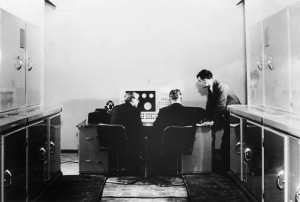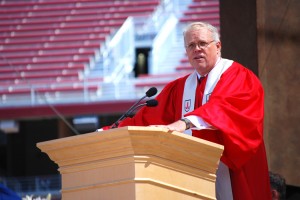A. M. Turing Award
Thursday, April 5th, 2018April 5, 2018
It can be easy to forget how much computer innovations have changed and improved our everyday lives over the years. A person living 100 years ago would scarcely be able to imagine sending a message directly to someone on the opposite side of the globe with just the click of a button or having access to an entire encyclopedia of information from a small handheld device. We have these and many more luxuries thanks to several decades of computing innovations. Fifty years ago, the Association for Computing Machinery (ACM) in New York City introduced the annual A. M. Turing Award to honor the hardworking computer scientists behind those innovations.

Alan M. Turing (at right) was an English mathematician and computer pioneer. He made important contributions to the development of electronic digital computers.
Credit: Heritage-Images/Science Museum, London
The A. M. Turing Award is given to one or more individuals each year in recognition of contributions of lasting importance in the field of computing. On March 21, 2018, the American computer scientists David A. Patterson and John L. Hennessy were named the recipients of the 2017 A. M. Turing Award for their pioneering work in computer chip design. The two men are responsible for designing and promoting reduced instruction set computer (RISC) microprocessors. A microprocessor is a kind of computer chip that carries out the instructions that make up computer programs. RISC microprocessors are simplified computer chips that run faster and consume less power than other kinds of chips.
Patterson proposed the idea for a RISC computer in 1980. He and his research team at the University of California in Berkeley built and demonstrated the first RISC processor in 1982. Hennessy’s research team at Stanford University in California developed further RISC models shortly thereafter. In 1990, Patterson and Hennessy co-wrote a groundbreaking textbook on microprocessor design. The book, called Computer Architecture: A Quantitative Approach, became a standard text for engineering computer chips. Today, about 99 percent of all microprocessors produced annually are RISC processors. RISC chips are found in almost every smartphone and tablet.

John L. Hennessy. Credit: Eric Chan (licensed under CC BY 2.0)
The A. M. Turing Award is named after Alan Mathison Turing, a British mathematician and computer pioneer. Turing made key contributions to the development of electronic computers, including his work helping to build the first British electronic digital computer. In 1950, he proposed a test for determining if machines might be said to “think.” This test, now called the Turing test, is still central to discussions of artificial intelligence.
The first Turing Award was given to the American computer scientist Alan J. Perlis in 1966 for his role in developing influential computer-programming techniques. Since then, an award has been given every year. As of 2014, the award includes a $1 million cash prize.



